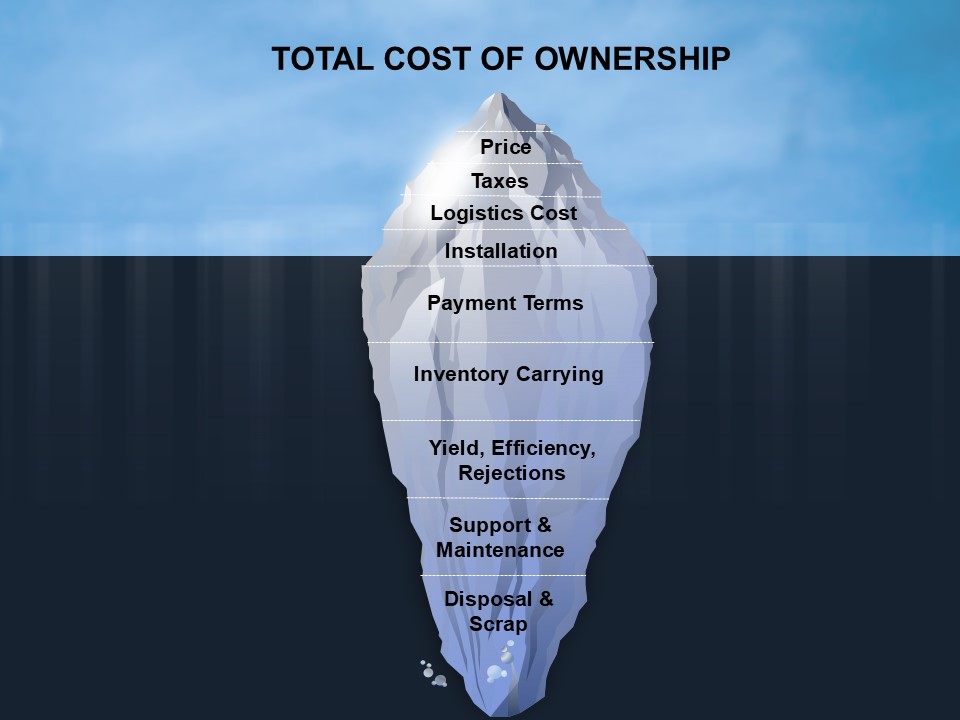Negotiating Beyond Price: Total Cost of Ownership (TCO)
Discover how Total Cost of Ownership (TCO) transforms negotiations from price battles to value creation. Learn real-world strategies and stories that show how TCO leads to win-win outcomes and stronger supplier partnerships.
SCIENCE OF NEGOTIATIONNEGOTIATION STRATEGIESPRINCIPLED NEGOTIATIONNEGOTIATION SKILLSWIN-WIN NEGOTIATIONNEVER SPLIT THE DIFFERENCETOTAL COST OF OWNERSHIP
Ashish Mendiratta
4/14/20253 min read


Ever walked into a negotiation thinking, “Let’s just get the best price”?
I used to — until I realized that real savings (and real partnerships) come not from price haggling, but from understanding Total Cost of Ownership (TCO).
This is the story of how TCO transformed my negotiation game — from chasing discounts to creating value. And how it can do the same for you.
The Trap of Price-Only Thinking
Early in my career, I thought negotiation success was simple: Get the lowest price.
That strategy worked — until it didn’t. I’d push for a 5% cut, only to discover later that the supplier was compromising on quality, delaying shipments, or adding hidden costs. That “savings”? Gone. Eroded by rework, delays, and unhappy customers.
That’s when I discovered the true power of TCO.
What is Total Cost of Ownership (TCO)?
TCO looks beyond the purchase price. It factors in:
Installation and training
Operational efficiency
Maintenance and downtime
Spare parts and support
Disposal and end-of-life
It’s a 360-degree view of cost over the entire lifecycle of the product or service.
The Packaging Deal That Changed My Mindset
I was negotiating packaging rates — pushing for a 7% reduction. The supplier offered something unexpected:
“What if we reduce your damage rate by 10% and speed up your packing line?”
They redesigned the box: slightly more expensive per unit, but sturdier and easier to fold.
Result: 2% net savings from fewer complaints, less rework, and lower secondary packaging costs.
Lesson: Sometimes, paying more upfront saves more in the long run.
From Price Wars to Partnership: The Power of Expanding the Pie
There’s a term in negotiation called “expanding the pie.” It means creating value, not fighting over existing crumbs.
TCO allows this shift by uncovering hidden opportunities. Here’s how it worked for me and some of my colleagues in three real-world cases:
1. Understanding Each Other’s Cost Drivers
They dismissed a logistics provider due to a 5% higher quote. But they had a warehouse close to our hub — cutting transfer times & costs drastically.
TCO analysis showed:
We saved 8% net after considering:
Lower demurrage
Fewer stock-outs
Faster replenishment
Reduced inventory carrying cost
We gave them the business — and later co-created new solutions.
2. Solving Problems Together
A specialty chemical supplier struggled with product variability. Instead of threatening penalties, we co-invested in R&D to fix it.
Result:
Better yield
Consistent product performance
An exclusive formulation that boosted our market share
Lesson: Collaboration beats confrontation.
3. Capital Equipment: The Big Win
Vendor A quoted ₹8 crore. Vendor B quoted ₹9.5 crore.
Initial reaction: Go with A.
But the TCO told another story:
Vendor B’s machine consumed less power
Had better uptime
Required fewer maintenance visits
Included operator training modules
Result: Net savings of ₹60 lakhs over 7 years
We picked Vendor B — and got global recognition for our decision.
TCO in Negotiation: My Approach
Want to use TCO to craft better deals? Here's how I do it:
1. Prepare with Purpose
Build a TCO model involving:
Price
Logistics cost
Finance cost (Payment Terms)
Operational cost (yield, efficiency, consumables, non-value adding time)
Cost of non-Quality
Maintenance (downtime & repair)
Support cost
Stock-out cost (loss of revenue due to lost sales & delays)
Disposal cost (decommissioning, waste generation)
Look beyond unit cost. Ask:
“How does this affect performance, downtime, service levels?”
2. Be Transparent with Suppliers
I often share parts of our TCO analysis with suppliers: “Here’s where we’re bleeding cost. Can you help us reduce it?”
This changes the dynamic. We become partners, not adversaries.
3. Use “What-If” Scenarios
Explore trade-offs:
What if we commit to longer contracts?
What if you reduce MOQ in return for payment term flexibility?
What if we co-invest in automation?
It’s not just a negotiation — it’s joint problem-solving.
TCO is a Mindset, Not Just a Model
The best negotiators I know aren’t the loudest or toughest. They’re the most curious.
They ask better questions.
They model long-term impact.
They think like business partners.
And Sometimes, Value Isn’t Quantifiable
Not every benefit fits neatly into an Excel cell:
Supplier support during a crisis
Cultural alignment
Innovation access
Flexibility in urgent scenarios
TCO thinking helps you account for these — even if they’re intangible.
Win-Win Isn’t a Myth
A real win-win isn’t about being “nice.” It’s about finding value the other side didn’t see — and sharing it. With TCO, you don’t fight over price — you create a bigger pie.
Stay Connected for more Insights
Final Thoughts: Negotiating in a TCO World
As markets evolve, costs fluctuate, and ESG becomes core to strategy — the old price-only playbook just doesn’t cut it.
TCO is the new edge in negotiation.
Next time you walk into a deal, ask yourself:
Am I seeing the whole picture?
Can I look beyond price?
Can I expand the pie?
Trust me — the answer will change everything.
Subscribe
Contact:
P2/54 DLF Phase 2 Gurugram 122002
contact@advanchainge.com
+91-9873829286
deepak.nande@advanchainge.com
+91-9820291969


